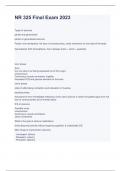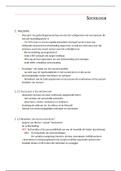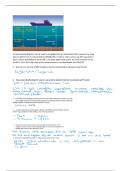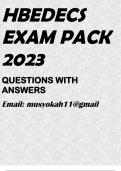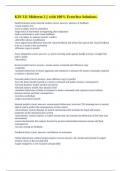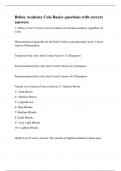Tentamen (uitwerkingen)
NR 325 Final Exam 2023
- Vak
- Instelling
NR 325 Final Exam 2023 Types of seizures partial and generalized partial vs generalized seizures Partial: one hemisphere, No loss of consciousness, Jerky movement on one side of the body Generalized: both hemispheres, has 3 phases (tonic > clonic > postictal) Brainpower Read More toni...
[Meer zien]
